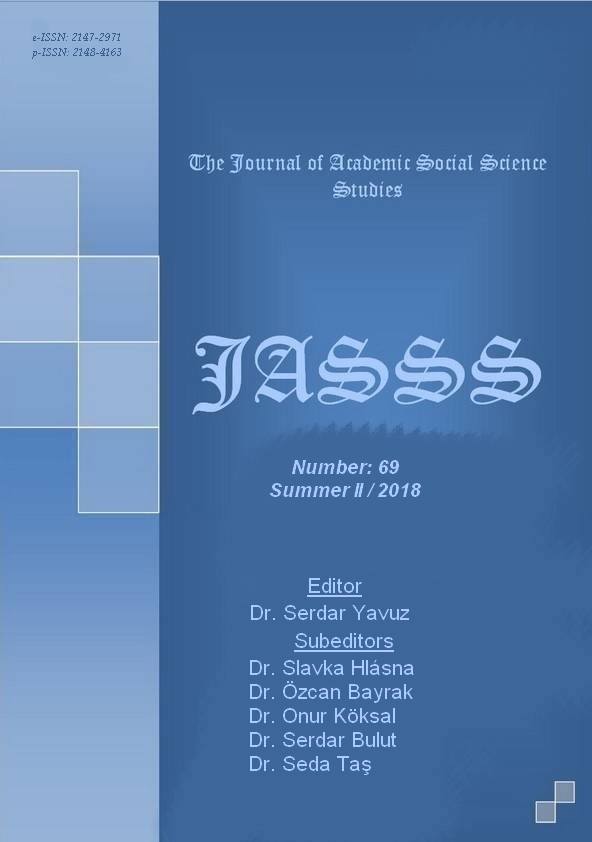Author :
Abstract
Kaynak taraması ile yapılan ve bu niteliksel çalışma yakın geçmişte dünyada ve Türkiye’de yaşanmış çeşitli protesto ve gösteri olaylarının fotoğraflarına odaklanarak temelde habercilik kaygıları ve basın-yayın sektörü standartları ile çekilen bu fotoğrafları benzerlerinden ayıran sanatsal ve estetik boyutları ve bu ayrımı yaratan fotoğraf temelli ve bağlamsal nedenleri incelemektedir. Fotoğraf ile haberciliğin ilişkisi ve bu kavramların fotoğraf tasarımı özelinde sanatsal ifadesine yönelik kuramsal bir tartışmadan sonra söz konusu estetik ifadeyi örnekleyen farklı zaman ve yerlerde çekilmiş çeşitli protesto ve gösteri fotoğraflarıyla, bu fotoğrafların habercilik işlevinin yanı sıra sahip olduğu sanatsal boyut ile bu boyutu oluşturan fotoğraf tasarımı teknikleri ele alınmaktadır. İster basit bir protesto ister daha geniş kapsamlı bir gösteri olsun foto muhabirleri öncelikle habercilik sorularına yanıt arayan genel plan çekimleriyle fotoğraf çekimine başlamaktadır. Genel plan çekimlerini kimin neyi neden protesto ettiğini ve protestocuların isteklerini ortaya çıkarmak hedefleyen ve protestonun amaçlarını gösteren pankartları, posterleri içeren daha yakın plan çekimler izlemektedir. Bu fotoğrafların dışında fotoğrafı çekilen diğer bir öğe söz konusu protesto ve gösterinin yerini ulusal ve uluslararası kamuoyuna gösterecek protestonun gerçekleştiği ülkenin bayrağı ya da anıtlaşmış binaları gibi sembollerdir. Foto muhabirlerinin bir protesto veya gösteride çektikleri fotoğraflarda habercilik ve estetik değerlerini bir araya getirdikleri son öğe protestoya kendi karakterini kazandıran insanların kolektif tutkusu ya da hareket ‘enerji’sini yansıtan yansıyan kişi sayısı, genellikle bağırarak slogan atan insanlar, havadaki yumrukları ve pankartlar şeklinde somutlaşmış öğelerdir. Çalışma ayrıca protesto ve gösteri fotoğraflarının bu fotoğrafları çeken foto muhabirlerinin ya da fotoğrafçıların sanatsal tercihleri ile olayı bir tanık gibi yansıtmaya dönük habercilik misyonlarının karışımdan doğduğunu ortaya çıkarmıştır. Sanatsal anlatının daha farklı bir bakış açısı oluşturduğu bu karma strateji protesto ve gösterilerin daha güçlü ve düşündürücü fotoğraflar yaratılmasını sağlamaktadır.
Keywords
Abstract
Using literature review method, this qualitative study examines the photographic and contextual reasons as well as artistic and aesthetic aspects that distinguish photographs with fundamental journalism concerns and media standards from those that do not have these aspects by focusing on the photographs of protest and demonstrations taken all in the world and Turkey alike in recent history. Following a theoretical discussion related to the relationship between photography and journalism as well as the artistic expression of these concepts with specific reference to the design principles of photography, the artistic aspect of these photographs and the photographic techniques creating that aspect are examined via several protest and demonstration photographs taken at various times and places that exemplify the aesthetic expression. Whether it is a simple protest or an extensive demonstration, photojournalists start with wide shots aiming to answer the fundamental questions that provide the news value for the photographs. What follows these wide shots is close-up shots that show who protests what for what reason, thus trying to clarify the protestors’ wishes and examples of these shots include those of banners and posters. Apart from these photographs, a further item is a symbol, such as the flag of the country where the protest was held, or the monumental buildings, which shows to the national and international viewers where the protest and demonstration was organized. The last item that photojournalists bring together in a photograph of a protest or a demonstration regarding journalism and aesthetic values is the collective passion or ‘energy’ of the protest, as reflected in the number of people attending and shouting slogans, with their fists in the air and their banners, which gives its own characters to the protest. This study also clarifies that protest and demonstration photographs are the result of their artistic preferences and journalism mission to be a witness to those protests and demonstrations. This blended strategy by which artistic expressions lead to different points of view results in stronger and striking photographs.
